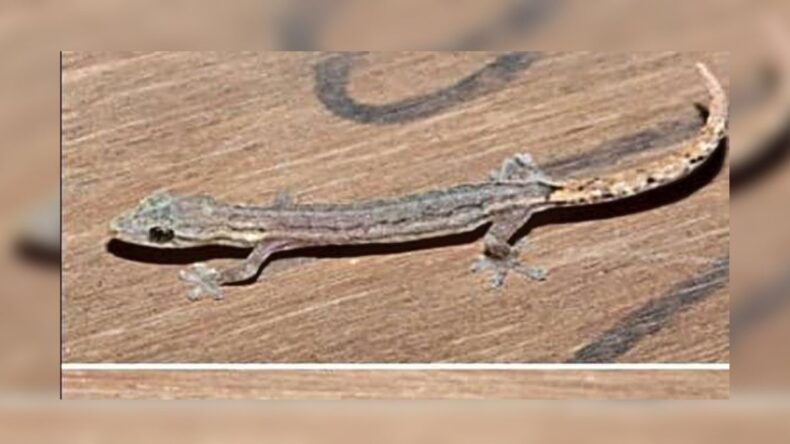Although the gecko species discovered in Goa is believed not to have endangered, researchers warn they are at risk from “construction and sometimes vegetation burning, which may result in habitat loss.”
It is the smallest known species of that genus with a maximum length of 32 mm — believed to be endemic to the biodiversity-rich Western Ghats.
The Hemiphyllodactylus genus now has a scientific name, Hemiphyllodactylus genesis, after the state of Goa where it got discovered, and it has been suggested that it be known as the Goan slender gecko.
Hemiphyllodactylus goaensis specimens got discovered in two Goa locations: two in north Goa at the Goa University campus and one in south Goa near Chandor, each around 30 kilometres apart.
The researchers, lead by Akansh Khandekar of the Thackeray Wildlife Foundation and Dikansh Parmar of Goa University, wrote in their published report, “This reveals the richness of the university campus as well as the diversity of reptiles in Goa, which has been rarely explored.”
All of the newly discovered specimens got discovered in similar microhabitats, such as human habitation on walls.
The Chandor location is a semi-urban residential area. At the same time, Goa University is built on a flat, coastal, lateritic outcrop with seasonally dry grasslands and scattered vegetation with shrubs and trees.
Its 16–18 dorsal scales distinguish the species and 13 or 14 ventral scales at mid-body, all contained within one longitudinal eye diameter and subtle colour pattern changes.
The researchers used mitochondrial DNA sequencing to confirm that it was a separate species that are not closely related to either the South Indian or Eastern Ghats clades of Indian Hemiphyllodactylus and looks to be a member of a third clade of Indian Hemiphyllodactylus.
A clade is a classification system for a group of species thought to be all evolutionary descendants of a common ancestor.
The new Hemiphyllodactylus species is the first to be described from the northern Western Ghats region and Goa state. It is also just the second Indian Hemiphyllodactylus to be found at altitudes of less than 100 metres.
The discovery aids scientists in understanding Indian geckos by extending the genus’ known distribution in western India 560 kilometres north in the aerial distance and demonstrating that the genus is more widely distributed than previously thought, with numerous undescribed species most likely.
Hemiphyllodactylus goaensis sp. nov. is a slow-moving but active hunter that preyed on small crickets, moths, bugs, and cockroaches in captivity.
When more giant insects (twice the size of geckos’ heads) were provided, the geckos would seize them in their mouths and shake their heads violently to tear them apart so they could eat them, according to the researchers.
The species is thought not to have endangered. Still, the researchers warn they are at risk from “construction and sometimes vegetation burning, which may result in habitat loss for the species,” according to the research report.
“We’re doing more sampling to figure out the range and diversity of the genus Hemiphyllodactylus in Goa and other parts of the northern Western Ghats to see if there are several species.
Furthermore, we are attempting to comprehend the natural habitats of Hemiphyllodactylus goaensis sp. nov., which has only been collected from human habitation thus far,” the researchers explained.













